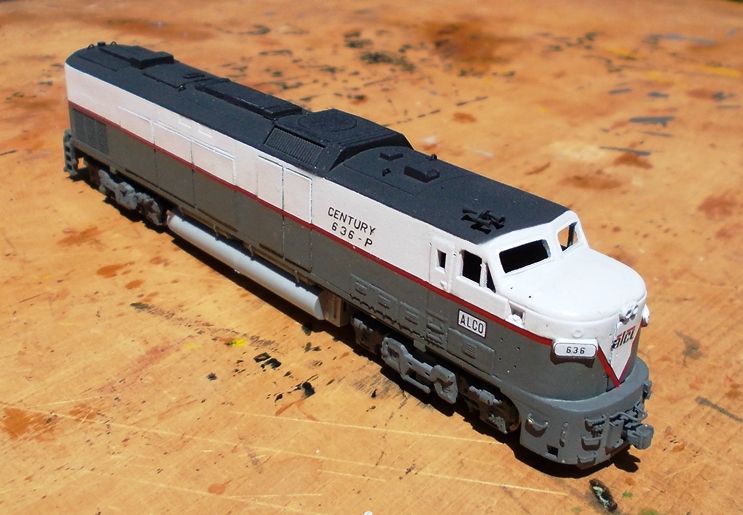mtuandrew wrote:Did Alco, MLW, or any of their licensees seek to develop a 251-powered passenger locomotive for the United States or Canada, exclusive of the FPA-4 and the LRC power car?
I suspect that there was no development done (or proposed) after the MLW/Bombardier LRC, but I can't swear to it.
mtuandrew wrote: In particular, I am wondering whether anyone thought to adapt the Diesel Locomotive Works WDP3A back to American standards, or whether anyone is currently considering doing so.
I imagine there are probably at least a few people who thought about it

but I know of no proposals or development, past or present.
mtuandrew wrote: The 16-251 doesn't compare badly with the 16-645s still used by MPI, anyway, and I believe user prakash mentioned DLW uprating the Alco design to 4000 horsepower and working on emissions.
I don't doubt that the 251 could be made to meet Tier 4 emissions, but I have a feeling that it might come at a cost... literally or figuratively, or both. I suspect it might involve a combination of several different technologies, such as EGR, SCR, and DPF. All of these are proven technologies, but the 251 would be at a competitive disadvantage if it had to use more than one of them.
Redesigned turbochargers, redesigned injectors, redesigned cooling systems, etc., might be required as well.
EMD and GE both have had to spend HUGE sums of money to get their engines up to Tier 4, and they were at much less of a disadvantage to begin with. Who would front the money to get the 251 up to Tier 4? I can't see MPI taking that risk when they've got a proven, off-the-shelf, already-paid-for Tier 4 engine solution from GE that they can use.
The other question you have to ask is — and this is perhaps the most important question of all — what U.S. or Canadian customer would buy a 251-powered passenger locomotive at this point in time? Even if you look back to the '80s and '90s for a "what if" scenario, would there have been any willing customers? We already know that Amtrak said "no thanks" to the LRC (which is really quite unfortunate), and I can't see any of the commuter operators responding any differently, especially since they tend to be more conservative and risk-averse than Amtrak (if such a thing is even possible!). Even Canada's VIA Rail never went back for any more 251-powered locomotives. If anyone would've bought more, it would've been them.
It would've been interesting if Bombardier had continued in the North American diesel locomotive business and continued to develop/improve the HR412 and HR616. Perhaps they could have built a lower-cost commuter locomotive to compete with the F40PH. Start with the HR412, add some length to accommodate a 16-251 and HEP package, add a full body cowl (Draper Taper, of course!), gear it for 100 MPH, and call it the HR416P.

